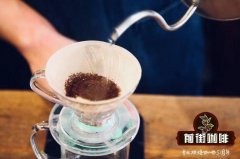Do you know how to deal with the silver skin of coffee? how is the silver skin removed from the roasted coffee?

Professional coffee knowledge exchange more coffee bean information please follow the coffee workshop (Wechat official account cafe_style)
Silver Skin/Chaff: there is a thinner film inside the parchment that wraps the coffee beans. Because the color is glossy and silvery, people used to call it "silver skin". This layer of silver will fall off during baking. Usually when you grind the coffee, you find some silver crumbs in the coffee powder. These crumbs are the silver skins that fail to peel off the coffee beans during baking.
There is a saying in Coffee Coffee that if we roast and heat the coffee beans, the dried (sun-dried) coffee beans will peel off a lot of silver, while the water-washed coffee beans are much less. When we look at the central concave line of coffee beans, if we retain a lot of white silver skin, the coffee beans processed by water shampoo are more likely.
Water content
The water content of water-washed coffee is 12% 13%, while that of dry (sun-dried) coffee is 1112%. General coffee beans show different colors due to their different water content, with higher water content being green or cyan, and less brown or near white. Therefore, the washed coffee beans show a darker green.
Is the silver skin in good condition?
In the process of processing, the washing method usually removes the silver skin from the coffee beans, showing a special luster, but the law of drying and refinement only takes off the coffee shell, and the silver skin is still intact.
Baking degree
Different processing methods use different degrees of baking, the effect is also different. In general, if the water-washed coffee beans have not been deeply roasted, the residual silver skin of the central line still exists. Although the silver skins of dry coffee beans are intact during processing, they are all gone after baking. The deeper the roasting, the darker the coffee beans will be.
The outer silver skin of the beans in the sun is relatively more, and it takes off more thoroughly when baking, so it is relatively less when grinding; there is more silver skin in the beans washed in water, and there will be a lot of residue after baking and more when grinding. Of course, it is directly related to the baking degree. The deeper the baking, the cleaner the silver skin will take off.
If there is too much silver skin, it will taste astringent, but if the raw bean treats the silver skin too much, it will lead to a decrease in flavor.
Moreover, there must be silver skin on the central line of washed beans, but the problem is that that part may not produce obvious astringency, so don't pick out the silver skin completely.
A good electric bean grinder has the function of automatically removing silver skin. if you grind it by hand, the silver skin will be blown off by maximum rough grinding and then fine grinding. No silver peel is a little astringent but does not affect the overall taste of the coffee.
END
Important Notice :
前街咖啡 FrontStreet Coffee has moved to new addredd:
FrontStreet Coffee Address: 315,Donghua East Road,GuangZhou
Tel:020 38364473
- Prev

Do you know what coffee honey is? is there anything special about coffee honey treatment?
Professional coffee knowledge exchange more coffee bean information please follow the coffee workshop (Wechat official account cafe_style) Why is it called honey treatment? There are three main ways to treat coffee: sun exposure, water washing and honey treatment. The sun drying method is to directly expose the coffee cherries before removing the shell and pectin layer; the water washing method is to screen the coffee pulp before exposure and ferment to remove the pectin layer.
- Next

Is Africa rich in coffee beans? why are African coffee beans so popular?
Professional coffee knowledge exchange more coffee bean information please follow the coffee workshop (Wechat official account cafe_style) of all the coffee-producing countries, Ethiopia may be the most eye-catching one, in addition to the unique and outstanding coffee produced in the country, the local coffee mystery legend adds charm. According to the ancient legend of Egypt, the first coffee tree on earth landed on Lake Tana.
Related
- Beginners will see the "Coffee pull flower" guide!
- What is the difference between ice blog purified milk and ordinary milk coffee?
- Why is the Philippines the largest producer of crops in Liberia?
- For coffee extraction, should the fine powder be retained?
- How does extracted espresso fill pressed powder? How much strength does it take to press the powder?
- How to make jasmine cold extract coffee? Is the jasmine + latte good?
- Will this little toy really make the coffee taste better? How does Lily Drip affect coffee extraction?
- Will the action of slapping the filter cup also affect coffee extraction?
- What's the difference between powder-to-water ratio and powder-to-liquid ratio?
- What is the Ethiopian local species? What does it have to do with Heirloom native species?

